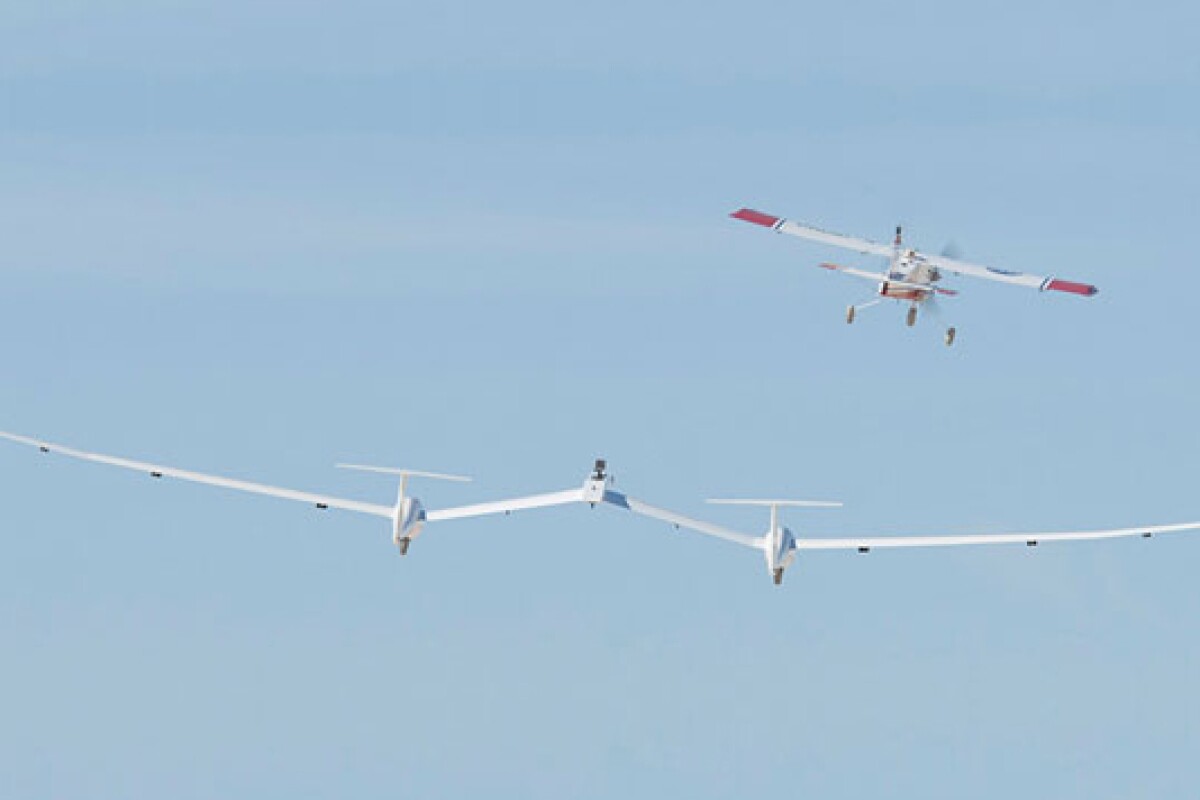Recently, DARPA unveiled its ALASA system for launching satellites from fighter planes. Now NASA is upping the ante with its Towed Glider Air-Launch System (TGALS), which is designed to launch satellites from a twin-fuselage towed glider. Under development by NASA's Armstrong Flight Research Center at Edwards Air Force Base, California, it's designed as an economical method for putting spacecraft into low-Earth orbit with the first test flight of a scale prototype having already been conducted.
The aim of TGALS is the same as that of ALASA: to create a space launch system for small satellites that replaces the first stage booster rocket with a conventional aircraft. In its current form, ALASA uses a F-15 fighter jet, which provides a lot of speed, altitude, and vertical thrust. That's all well and good, but fighter jets are expensive to operate and there's a limit to what they can carry and where they can operate from.
TGALS' approach is to go for a more flexible and cheaper design by making an unmanned or pilot-optional glider that's cheaper to build than a custom aircraft, and uses an open structure for more flexibility in payload size. Because TGALS is towed into the air by a conventional aircraft and released at 40,000 ft (12,000 m), it can operate from even small municipal airports.

Once released by its tow plane, TGALS fires a solid or hybrid rocket booster that allows it to accelerate in a steep climb. If unmanned, it can potentially make steeper climbs with more g forces than even the F-15 because there's no pilot to consider. Once the craft reaches peak altitude, it drops the rocket stage, which fires and sends the satellite into orbit. Meanwhile, the glider returns to base.
According to NASA, TGALS' first test flight of a one-third-scale twin fuselage prototype was achieved on October 21 of last year. The 27-ft (8.2-m) wingspan craft was towed by the unmanned Dryden Remotely Operated Integrated Drone (DROID), and made two successful flights and landings on Rogers Dry Lake near Edwards Air Force Base.
The purpose of the flight was to test the double-hull design. This was doubly important because it was built with a combination of off-the-shelf parts and bespoke components, which presented a number of problems in matching the hulls with the bespoke center wing.

"One of the concerns was we didn't know what the outer wing sections were made of, how they were constructed, or what kind of loads they could take," says TGALS chief engineer Ryan Dibley. "We performed a loads test in NASA Armstrong's Flight Loads Lab where we cleared the structure up to 2 gs to ensure that the wings could handle the loads of the glider itself and then with a partial mass payload. In the near future, we will put a wing back in the loads lab and test it to the loads required to carry the full payload."
Now that the design has been found airworthy, NASA plans to equip it with a scale-model Mini Sprite rocket, built by Whittinghill Aerospace of Camarillo, California for launch scenario testing.
The animation below shows the TGALS concept in action.
Source: NASA














